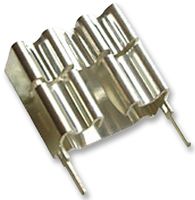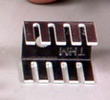daveee
Member
just finished building my first eq, a gyraf pultec 
i paid quite a bit of attention to detail with the construction (e.g. double-checking all wiring and component values)... but sadly it doesn't work as intended on first test, and i'm wondering if anyone could suggest where i should begin in terms of fault finding...
basically the controls work pretty much as expected, although with all pots at 0 (and even in bypass mode) there is a lack of bottom end (as if it's rolled off). the signal is also a little distorted. when i turn up the low boost pot the bottom end is boosted but the signal becomes more distorted (with low boost at around 2 or 3 the bottom end is roughly where it should be when bypassed, if you see what i mean).
a slightly odd thing i've found is the +250V HT rail is actually at around 275V (i guess because the first power trafo is outputting a slightly high 15V) but i assumed this would be within the tolerated range... maybe a mistake?
any ideas? (thanks in advance!)
i paid quite a bit of attention to detail with the construction (e.g. double-checking all wiring and component values)... but sadly it doesn't work as intended on first test, and i'm wondering if anyone could suggest where i should begin in terms of fault finding...
basically the controls work pretty much as expected, although with all pots at 0 (and even in bypass mode) there is a lack of bottom end (as if it's rolled off). the signal is also a little distorted. when i turn up the low boost pot the bottom end is boosted but the signal becomes more distorted (with low boost at around 2 or 3 the bottom end is roughly where it should be when bypassed, if you see what i mean).
a slightly odd thing i've found is the +250V HT rail is actually at around 275V (i guess because the first power trafo is outputting a slightly high 15V) but i assumed this would be within the tolerated range... maybe a mistake?
any ideas? (thanks in advance!)





































